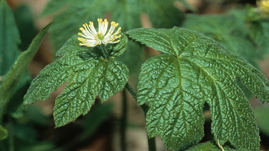Teachers' Domain - Digital Media for the Classroom and Professional Development
User: Preview


Put simply, “biodiversity” refers to the variety of life in a natural region or area. Adapted from the Kentucky Life Biodiversity series, this original video offers a brief overview of what the term biodiversity means and why certain areas, such as different regions in Kentucky, are unique and nationally significant.
What do we mean when we talk about biodiversity? “Bio” is a prefix meaning “life.” “Diversity” refers to the “condition of having or being composed of differing elements.” Therefore, biodiversity is the variety of all living things. But we can go a bit further. Researchers and scientists who study biodiversity also study the relationship these plants, animals, and organisms have with each other and with their natural surroundings, or “habitat.” The biodiversity of a particular region, or natural area, looks at the number of different species in that area, the way those species interact with each other, as well as whether or not the region has an abundant food supply and sufficient habitation to support them.
Kentucky is nationally recognized as one of the more biodiverse regions in the country. From the Appalachian Mountains in the eastern part of the state, to the Jackson Purchase in the west as part of the larger Gulf Plains Region, Kentucky has an incredibly diverse geographic landscape. Mountains, plateaus, plains, rolling hills, or “knobs,” meadows, caves, lakes, rivers, streams, and valleys are unique natural areas which can support a variety of plants, animals, fish, and other organisms.
Did you know Kentucky ranks third on the list of states with the most native fish? Mammoth Cave, in Edmonson County, is the longest cave system in the world. The caves and underground streams in this system are home to obligate species that cannot be found anywhere else. You can find one of the largest prairie remnants east of the Mississippi on Fort Campbell in Trigg and Christian counties. Some of the mountains of eastern Kentucky are include the most diverse temperate deciduous forests in the world.
There is a lot to learn from studying the natural world around us. Kentucky’s Natural Heritage: An Interactive Guide to Biodiversity is a collection of instructional resources designed to help users better understand the complex interrelationships between organisms and their habitats.
When I think of the term biodiversity, it is just a reflection of what’s on the landscape: plants, animals, water systems, small streams, rivers, lakes, and all of the things that utilize those: fish, mussels, birds, snakes, frogs. It’s all that richness of life, insects, and all those beautiful things that all have an intricate role.
Biodiversity is the sum of all life and the connections it has. It is the scope of small scale to large scale depending on upon what you are considering. It could be from the microorganisms in the soil up to water sources like mammals and a environment needed to sustain themselves. Short answer, that’s what biodiversity is.
 Loading Standards
Loading Standards